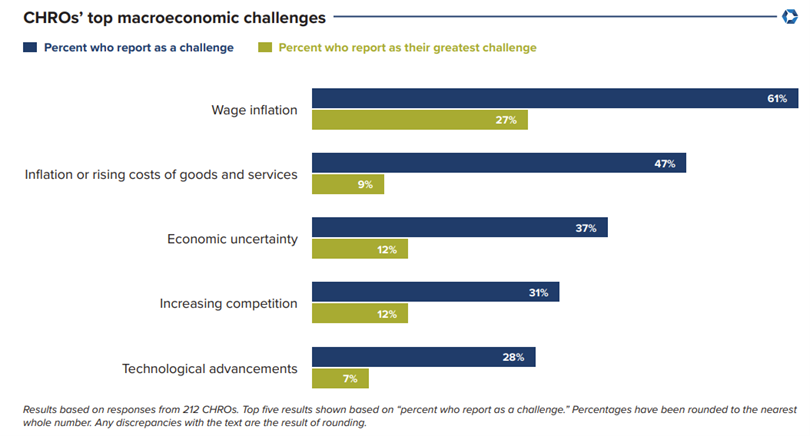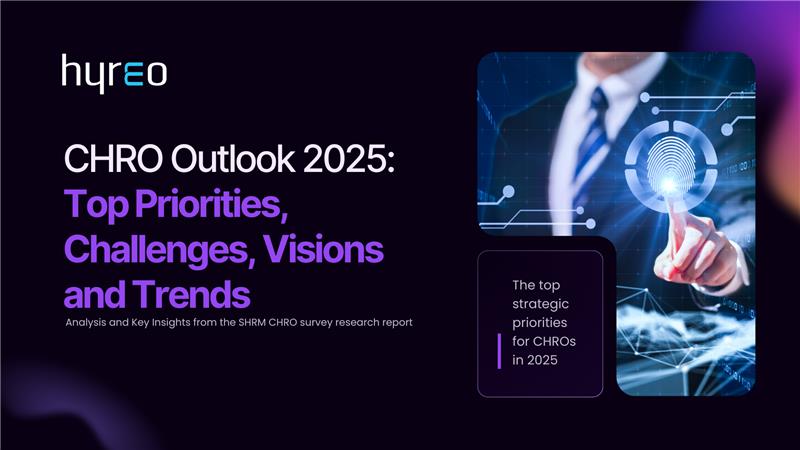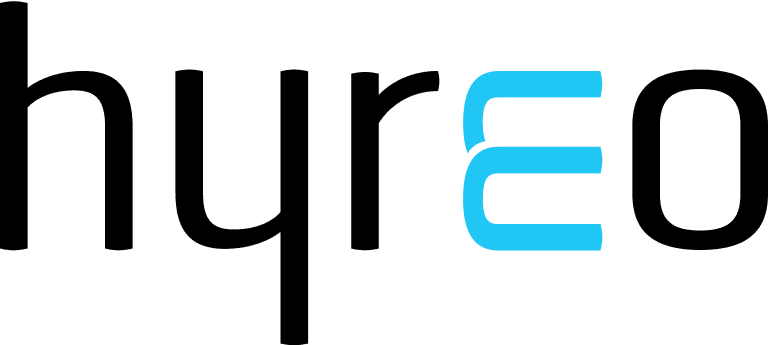Introduction
CHROs play one of the most critical roles in modern organizations. To illustrate the weight of their responsibility, imagine them as captains of a ship, making agile decisions guided by knowledge, expertise, and strategic foresight. These decisions help keep the organization resilient amidst turbulent changes and challenges, steering it toward successful and sustainable outcomes.
By aligning HR practices with broader organizational goals, CHROs drive holistic business success. That’s why their priorities, challenges, and vision are not just HR concerns—they’re business imperatives that decide the future of the organization.
In a recent SHRM study, 212 CHROs—or those serving as the most senior HR leaders in their organizations—were surveyed between November 20 and December 19, 2024. The findings were a mix of both expected and unexpected insights, offering a revealing snapshot of what’s top of mind for CHROs in 2025.
In this blog, we’ve unpacked the SHRM CHRO Survey Report section by section, exploring CHROs’:
- Top Priorities
- Key Challenges
- Vision for the Future
- Emerging Trends in 2025
Read on to discover what lies ahead for CHROs, along with actionable takeaways on how to overcome obstacles and turn vision into impact.
Top CHRO priorities in 2025
In 2025, CHROs have identified key priorities that align closely with their organizations’ strategic business goals. This is no simple task—CHROs must balance the evolving needs of the organization while ensuring their HR strategies are in sync with those of other executive leaders. This alignment is crucial to achieving holistic, enterprise-wide success.
From a list of 16 HR practice areas presented in the SHRM survey, three emerged as the top strategic priorities for CHROs.
Leadership and Manager Development
It might seem natural to assume that CHRO priorities would be primarily employee-centric—but the research tells a different story. In 2025, more than half of CHROs (51%) have selected leadership and manager development as their top priority.

[Source: SHRM]
What’s driving this focus? Firstly, this shift may reflect changing priorities of working populations. Increasingly, employees are showing reluctance to step into leadership roles. Meanwhile, a significant portion of current leaders—nearly 25%—are approaching retirement. These trends suggest an impending leadership gap on the horizon. In response, CHROs are prioritizing leadership and manager development to ensure a robust pipeline of capable leaders who can guide organizations through future challenges. It’s a strategic move aimed at long-term stability and growth.
Qualitative Analysis of CHROs’ Development Focus Areas for 2025

Leadership skills
- Basic Leadership Development: Equipping current/future leaders with essential skills at all levels.
- Adaptability & Change Management: Enhancing adaptability through change management and regulatory compliance.
- Empathy & Soft Skills: Developing communication, conflict resolution, and empathy for a positive workplace culture.
Management skills
- Foundational Management Training: Prioritizing training for new managers in supervision, compliance, retention, and team management.
- People Management Development: Cultivating empathetic leaders through team building and conflict resolution programs.
- Succession Planning & Workforce Readiness: Implementing succession management with structured career paths and targeted training plans.
Also read: Predictive Models for Effective Talent Acquisition: A Complete guide for 2025
2.Change management, Employee Experience, and Talent Management
Beyond the leadership focus, one-quarter of CHROs prioritized other employees and workplace aspects. While 30% emphasized change management, 28% and 27% gave priority to employee experience and talent management, respectively.
Change management
For change management, CHROs highlighted the need for effectively planning and managing transitions within the organization. This includes creating a structured approach to align organizational structures, responsibilities, processes, and systems with the company’s goals, as well as defining clear hierarchies and roles.
Employee Experience
Within employee experience, many factors come into play, including workplace culture, engagement, and remote/hybrid work strategies. However, 44% of CHROs specifically emphasized employee engagement—focusing on the emotional commitment and enthusiasm employees feel toward their workplace and organization. This requires a well-planned approach aimed at improving satisfaction, engagement, and productivity.
Talent Management
Talent management, a comprehensive set of HR processes that includes attracting, recruiting, retaining, and upskilling talent, is a critical area for CHROs. Nearly half of CHROs prioritized succession management, ensuring leadership continuity and future talent accessibility. Others stressed workforce planning, noting the importance of anticipating workforce needs in a dynamic industry, especially with the accelerated changes driven by AI and technology. A strategic approach is needed to predict workforce requirements and ensure talent capabilities align with business objectives.
Also read: Innovative Talent Engagement Strategies
Top CHRO Challenges in 2025
One of the most critical aspects of aligning CHRO priorities with organizational goals is recognizing potential challenges and proactively planning to mitigate them. In 2025, CHROs are staying vigilant, keeping a close watch on both micro and macro-level issues, all while juggling their role-based responsibilities.
- Economic and Financial Challenges
At the macro level, CHROs identified economic and financial pressures as key hurdles this year. A significant 61% pointed to wage inflation as a top macroeconomic challenge, with 27% ranking it as the most pressing concern. Additionally, 47% expressed concern over inflation or rising costs of goods and services. Interestingly, increased competition and rapid technological advancements were considered less threatening by comparison.

[Source: SHRM]
These financial concerns are largely fueled by rising operational costs and the increasing pressure CHROs face to meet financial goals despite budget constraints. In this context, wage and cost inflation are having a direct impact on HR strategies, especially around recruitment, recognition, and retention. According to SHRM, many CHROs are responding by strengthening partnerships with other C-suite executives, particularly CFOs. This cross-functional collaboration allows for innovative solutions grounded in both financial and workforce strategy.
Also read: Optimizing recruiting costs- factors, challenges, strategies and more.
- Employee Engagement, Attraction, & Retention
Employee-related challenges are also high on the radar. Attracting skilled talent (41%) and retaining them (40%) were cited as top concerns. One contributing to this difficulty is the rise of Gen Z talent, who tends to prioritize workplace culture, purpose, and growth opportunities over traditional incentives like compensation alone. Deloitte, in its 2025 Global Human Capital Trends research report, also highlights how leaders are stuck in a wait-and-see cycle, which can cause stress as they face complex choices necessary to balance business and human outcomes that drive organizational progress.

[Source: SHRM]
Additionally, 50% of CHROs identified maintaining employee morale and motivation as a key concern. Other notable challenges included building effective leadership development programs and succession plans—issues that likely explain why these areas have become top strategic priorities in 2025.
Also read: Recruiting AI Agents: Your New Hiring Ally
- Resources, Succession, and Process Inefficiencies
Beyond financial concerns, CHROs are struggling with internal constraints. About 31% reported HR budget limitations and lack of resources as major obstacles. Meanwhile, 29% are concerned about succession planning, and 28% cited inefficiencies in existing HR processes.

[Source: SHRM]
Staffing shortages have long been a challenge, but workload imbalances now compound them. Many teams are stretched thin, leading to burnout, reduced engagement, and increased attrition, creating a cycle of talent loss. According to Josh Bersin, HR leaders face intense pressure to reduce headcount and automate services using AI—and when they’re urged to take on productivity projects, it’s often a veiled way of saying downsizing.
Also Read: Investments in AI- Summarizing a decade of growth
- Workload Management and Work-life Integration
On a personal level, CHROs feel the strain of their demanding roles. About 34% cited workload and work-life balance as ongoing challenges. Career progression, workplace politics, and the need for motivational leadership also emerged as areas of personal concern for many survey respondents.

[Source: SHRM]
The complexity of executive roles like that of CHROs frequently blurs boundaries between professional responsibilities and personal well-being.
Also read: Impact of AI on the future job market
Top CHRO Visions for 2025
Looking ahead, CHROs anticipate significant shifts in the workforce realm—from labor market dynamics to strategic responses to emerging trends. Organizations that adapt quickly to these changes will have a competitive edge, especially when CHROs can accurately forecast and prepare for what’s coming. In the SHRM survey, CHROs outlined what they expect to remain relevant, what will evolve, and what might fade away.
- AI to become a prominent workplace trend
There has been a significant shift in the way CHROs view AI in 2025. 90% of CHROs agreed that AI will be one of the most prominent workplace trends moving forward. Its rapid advancement and proven capabilities have already made an impact—and that momentum is only accelerating. About 87% of CHROs believe AI will gain more traction due to its ability to significantly boost productivity and streamline traditionally manual HR functions. This growing reliance on AI also signals a shift in hiring priorities: future job roles will increasingly demand AI-related skills on resumes.

[Source: SHRM]
Moreover, 69% of CHROs predict that more advanced AI applications—such as autonomous AI agents—will begin supplementing workforce capabilities. While many leaders are optimistic, some express cautious concern. Interestingly, the worry isn’t about AI’s reliability, but rather its potential to take over strategic roles—even those currently held by CHROs themselves. This indicates the technology’s immense potential and the importance of using it responsibly and innovatively. According to Mckinsey, 92% of companies plan to increase their AI investments.
CHROs are closely monitoring AI trends and exploring ways to harness its power effectively, without compromising human value in the workplace.
- Employee Experience and Policy Changes
Employee experience and workplace policy shifts continue to remain high on the list of CHRO visions. Around 59% of CHROs are focusing on improving employee well-being, mental health, and rapid skill development. This renewed focus could be a response to AI’s growing role, which may require a more human-centered approach to balance technological integration. Nearly half of the respondents envision a future driven by people-first leadership, where empathy, trust, and emotional intelligence will be critical to building meaningful employee experiences.

[Source: SHRM]
On the policy front, CHROs foresee some unexpected shifts. Contrary to recent emphasis on DE&I (Diversity, Equity & Inclusion), many predict a rollback or scaling down of DE&I initiatives. Additionally, there is an anticipated rise in return-to-office expectations, suggesting a shift away from flexible work models in favor of more structured in-office presence.
Also read: A Guide to Building a Culture of Diversity, Equity, and Inclusion
Top CHRO Trends Expected in 2025
Amidst political shifts, a dynamic market, and technological advancements, CHROs are leveraging their strategic expertise and leadership to direct organizations toward sustainable growth. Below are the top three CHRO trends expected in 2025:
- Leadership and Manager Development
The workforce is the backbone of any organization, and CHROs, being the key drivers of it, are doubling down on leadership and manager development. In 2025, they will continue to mentor emerging leaders, equipping them with the skills needed to face future challenges and ensure long-term organizational resilience.
- Strategic Organizational Initiatives
While core HR functions such as employee relations, recruitment, and recognition will remain vital, CHROs are expanding their focus to high-impact strategic initiatives. These include change management, organizational design, employee experience, and talent management—areas that directly influence business agility and long-term performance.
- AI Integration and Talent Challenges
Alongside addressing long-standing challenges around hiring and retention, CHROs will take the lead in guiding organizations through the AI transformation sweeping across industries since there are several HR trends around Gen AI expanding in 2025. They will play a key role in helping organizations adapt through change management strategies and focused efforts on upskilling and reskilling the workforce.
Also read: Smart Hiring starts with Gen AI
Conclusion
Evaluating the findings of the SHRM CHRO Survey, it’s clear that the top priorities identified for 2025 are deeply rooted in the need to proactively manage both foreseeable and unforeseen changes that can impact organizational stability. The most effective way forward, as CHROs indicate, is through people—investing in leadership development, talent management, and employee experience to build a resilient, future-ready workforce.
While financial and economic pressures top the list of external challenges, internal ones—like HR process inefficiencies and policy shifts—are pushing CHROs to prioritize change management and organizational design.
The role of CHROs today is both demanding and strategic, requiring them to balance long-term vision with daily operational excellence. This is where technology, especially AI, steps in. From automating repetitive HR tasks to offering deep insights for better decision-making, AI is not just a tool but a strategic ally.
Interestingly, CHROs—traditionally cautious adopters of high-risk innovations—are placing significant faith in AI’s potential, as we can see from the report. The increasing focus on AI-driven workforce transformation and autonomous agents reflects a broader scope of blending human expertise with intelligent automation.
Supporting CHRO Priorities
- AI can enhance leadership and manager development by delivering personalized learning paths and real-time feedback systems.
- Automated engagement tools improve employee experience and support large-scale talent management initiatives.
Addressing CHRO Challenges
- AI reduces operational costs by streamlining core HR functions such as sourcing, screening, onboarding, and internal mobility.
- Predictive analytics helps CHROs plan proactively for talent gaps, retention risks, and organizational redesign needs.
Achieving CHRO Visions
- AI-human convergence ensures high-impact outcomes through a blend of empathy-led leadership and data-driven efficiency.
- Tools like Hyreo’s AI agent-based co-pilot empower CHROs to tackle talent challenges, boost productivity, and align HR efforts with business goals.
Hyreo has anticipated these shifts and built advanced, agentic solutions to meet the evolving priorities of CHROs. Our AI-driven recruitment co-pilot reduces operational costs, streamlines hiring processes, and delivers predictive insights to enable future-ready decision-making.
Also read: Top 5 Use Cases of AI Agents in Recruitment for 2025
FAQs
- Why is leadership development the top priority for CHROs in 2025?
With an expected leadership gap and changing workforce dynamics, CHROs are focusing on equipping managers at all levels with the skills needed to ensure business continuity and resilience. - How are CHROs planning to tackle economic and talent-related challenges?
CHROs are turning to cross-functional collaboration—especially with CFOs—and strategic tech adoption to manage cost pressures, while focusing on succession planning and workforce development to retain top talent. - What role does AI play in helping CHROs achieve their 2025 goals?
AI enables CHROs to automate routine tasks, reduce costs, and gain predictive insights, while also enhancing employee experiences and facilitating smarter, data-backed talent decisions.




